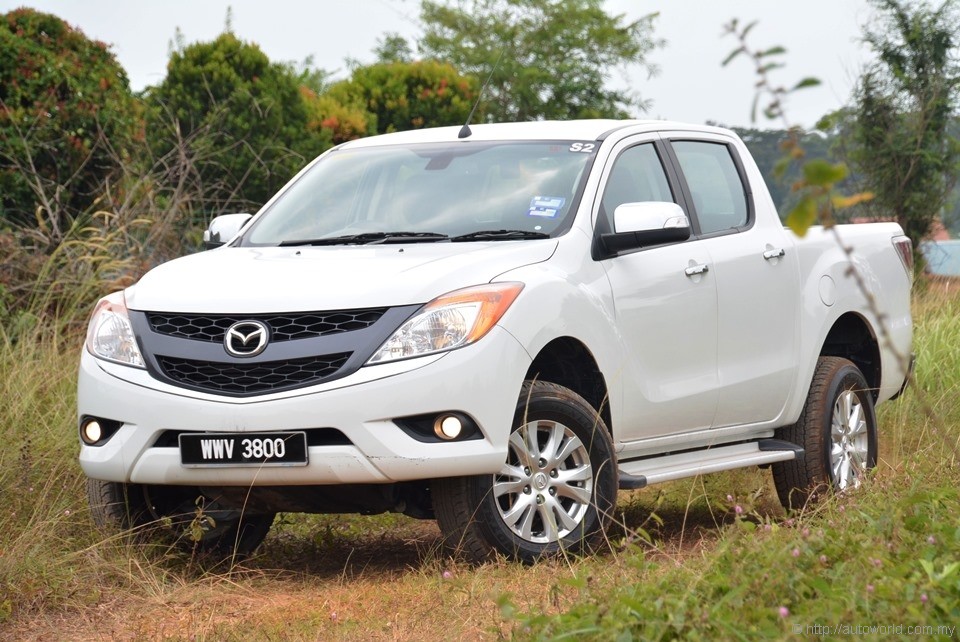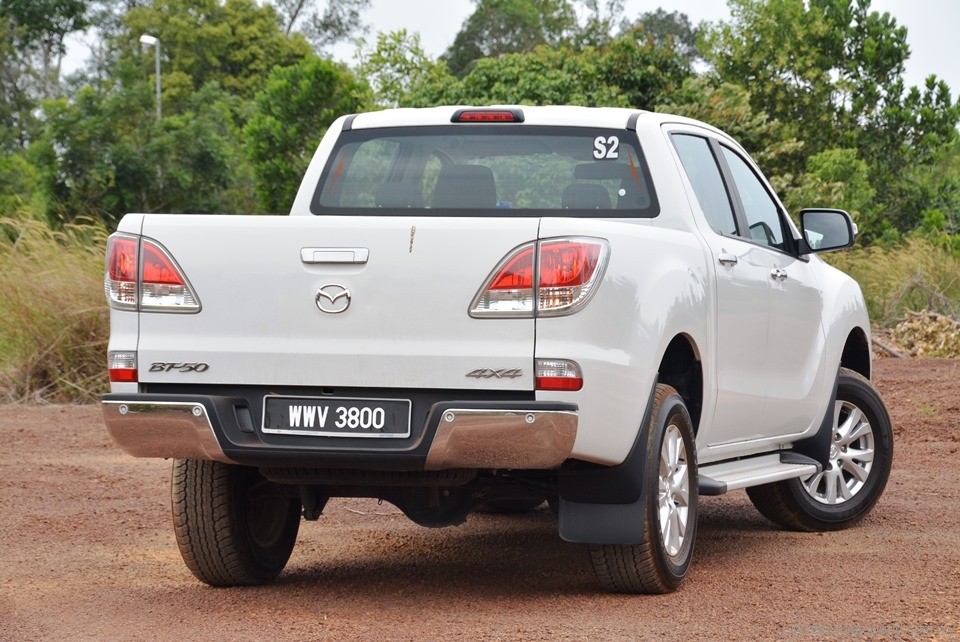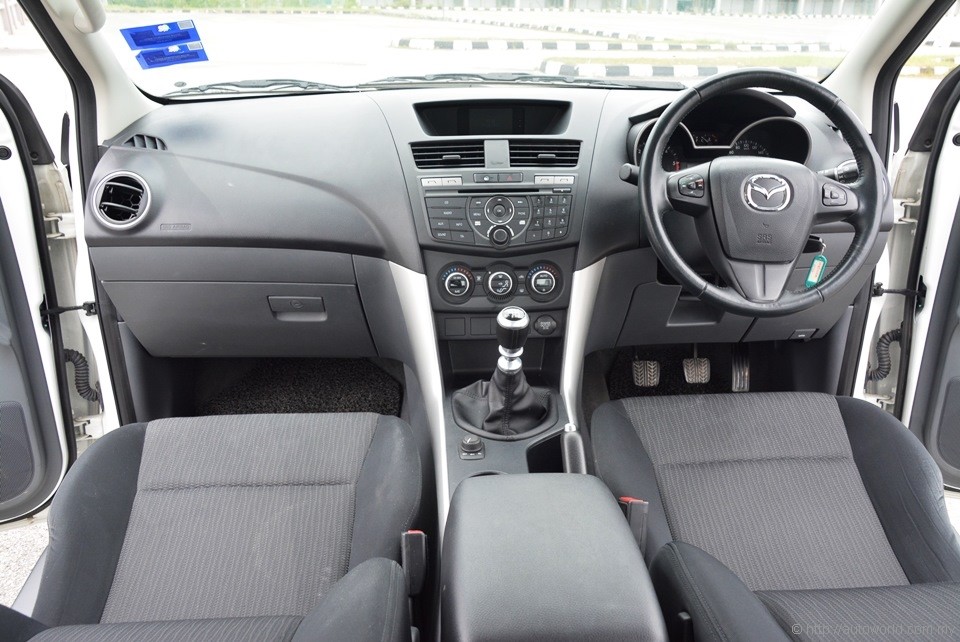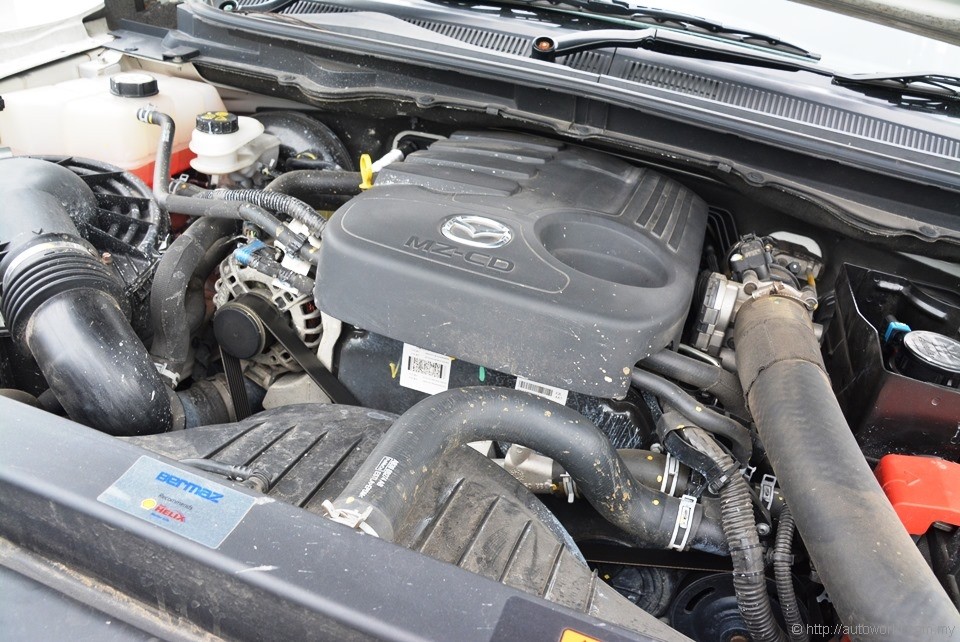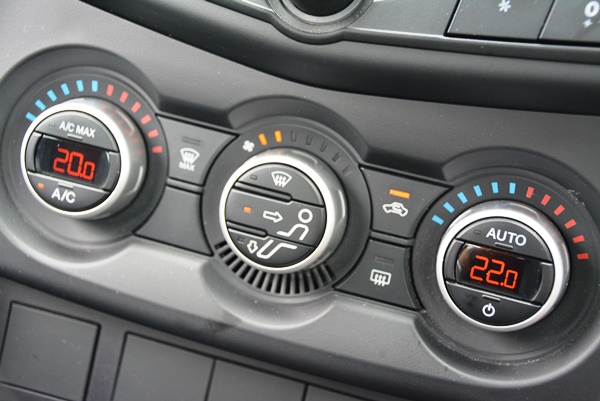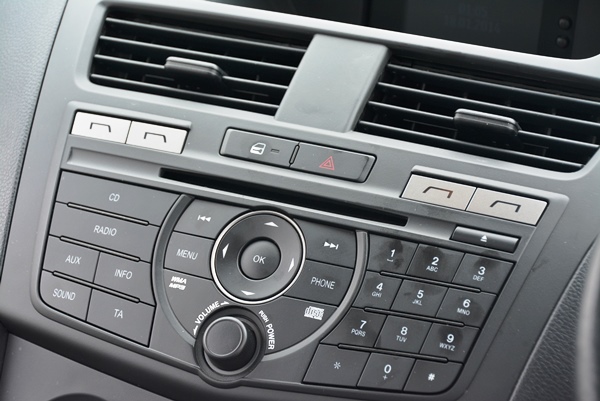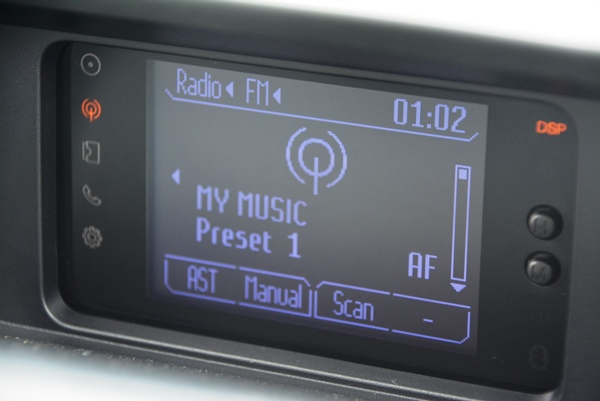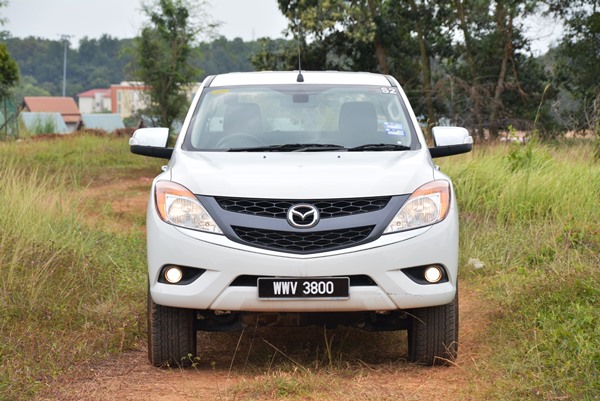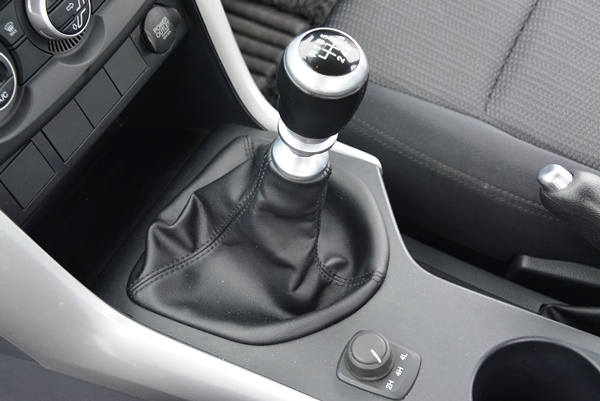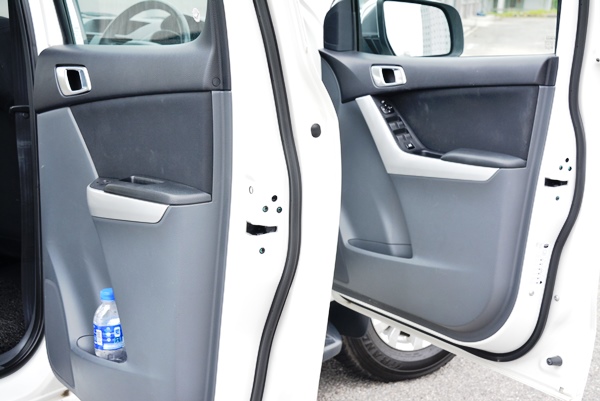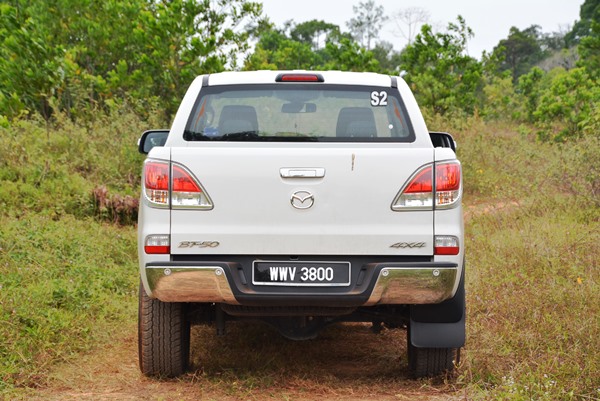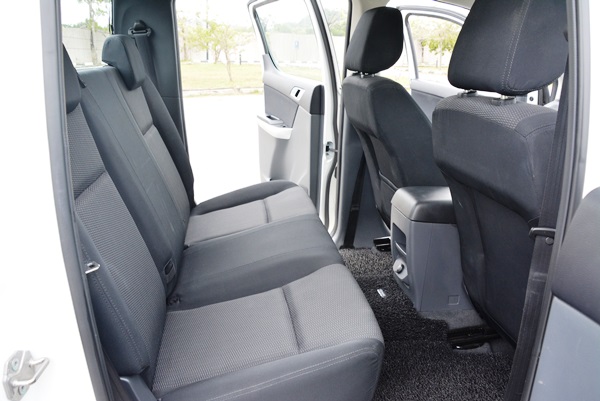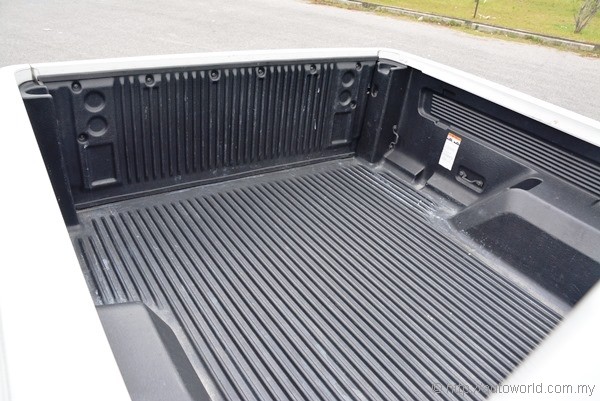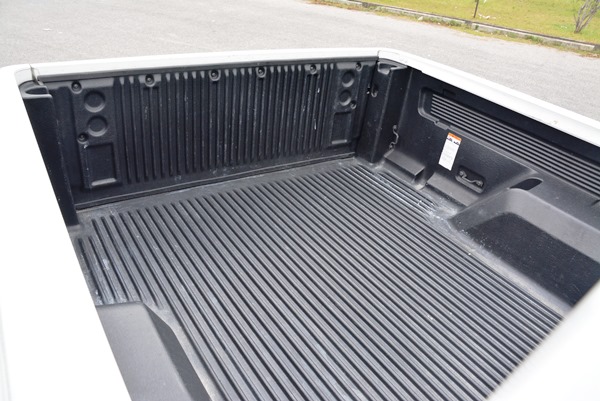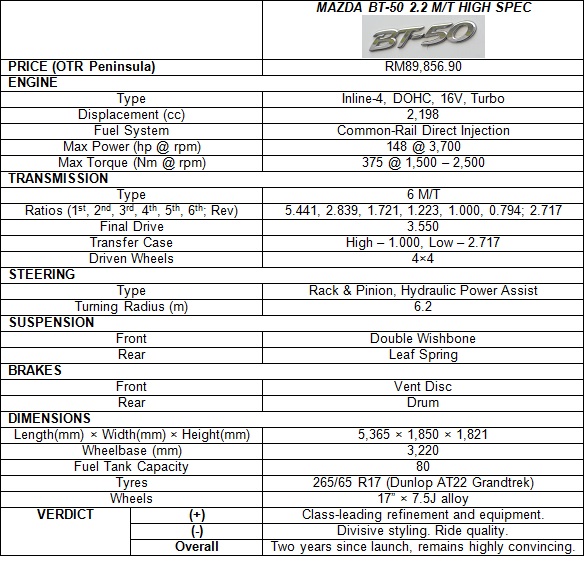Mazda BT-50 2.2 M/T Test Drive Review
Beyond their traditional roles as commercial workhorses, modern day pick-up trucks also double as affordable lifestyle vehicles. As such, the functional briefs and engineering demands of these vehicles have grown considerably over the last two decades. Manufacturers face the challenge of having to balance widening the appeal of modern pick-ups amongst private urban buyers versus maintaining the rugged appeal of these vehicles to commercial users and serious off-roaders.
Modern trucks therefore face the exacting task of having to be simultaneously tough and refined; they essentially have to marry grit and muscle with style and sophistication. The pick-up truck segment is currently sitting on the cusp of a transition period – whilst the likes of the Toyota Hilux, Mitsubishi Triton, and Nissan Navara are entering the last legs of their model life cycle, we are witnessing the arrival of a new generation of pick-up trucks that offer buyers of this segment an unprecedented upgrade in equipment and driving experience. A leading member of this new brigade of trucks is the Mazda BT-50 which we are revisiting today, a year and a half since its launch.
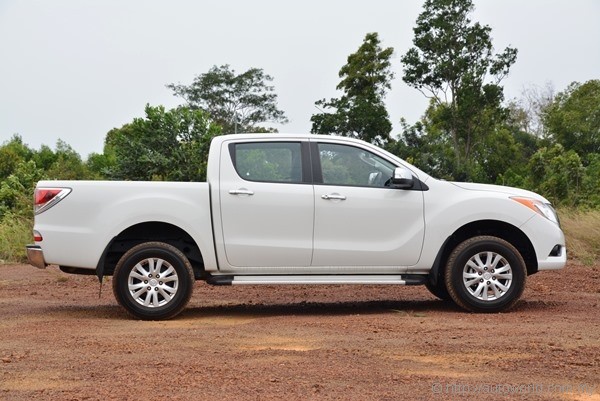 |
| Despite identical running gear, the BT-50 shares no common sheet metal with the Ford Ranger. |
Prices, Variants, and Specifications
After the initial launch which saw the introduction of three variants – 2.2 manual, 2.2 auto, and 3.2 auto – Mazda has added a fourth lower-specced version of the 2.2 manual to the BT-50 line-up. This new entry-level Mid Spec variant retains the same mechanical package as the existing 2.2 High Spec models but for savings of around RM7,000, omits alloy rims, Bluetooth connectivity, Voice Command, and leather-wrapped steering, going for RM82,874.90 with insurance.
For the purpose of this review, we are examining the BT-50 in its 2.2 High Spec manual guise, which hits the road at RM89,856.90 with insurance. The money paid here gets you automatic headlights, wipers, and dual-zone climate control. The more popular Ford Ranger, it is worth noting, offers single-zone manual air conditioning at this spec-level. Other amenities Mazda threw in include cruise control and integrated Bluetooth handsfree telephone operation, with both facilities usefully connected to steering-mounted controls.
Beneath its distinctive sheet metal, the BT-50 is virtually identical to the Ranger, both vehicles built in the same Ford/Mazda AutoAlliance Thailand plant in Rayong, Thailand. The range-topping 3.2-litre, the only 5-cylinder engine in the segment, pushes out a mighty 197hp and 470Nm, but we suspect most needs will be more than adequately met by the highly-boosted 2.2 four-cylinder pushing out 148hp and 375Nm as tested here. The Ford Ranger offers lower-powered versions of the 2.2, but Mazda here sells the BT-50 with this 148hp guise as standard.
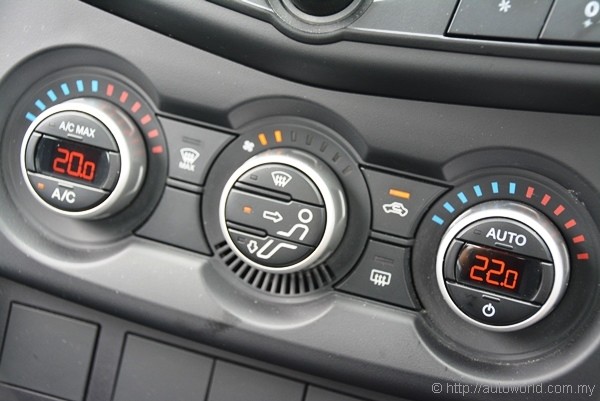 |
| Automatic dual-zone climate control one-ups the Ranger. |
Exterior
Despite common underpinnings, the BT-50 distinguishes itself from the Ranger with its own distinctive appearance. Mazda’s designers sculpted a unique set of sheet metal for the BT-50. Panels are not interchangeable, and the window lines for both vehicles are unique, despite the glass panels themselves stamped with ‘FoMoCo’ identification marks.
Contrasting the Ranger’s chunky appearance, the BT-50 embraces soft flowing lines similar its passenger cars. The effectiveness and acceptability of this design theme on a bulky pick-up truck is open to question, but what’s not in dispute is that the BT-50 looks distinctive and unmistakable from other pick-up trucks in the market. The BT-50’s most unique styling element is perhaps its tail light cluster which spills into the tailgate area, although there are actually are no lighting elements in the ‘spillover’ zone.
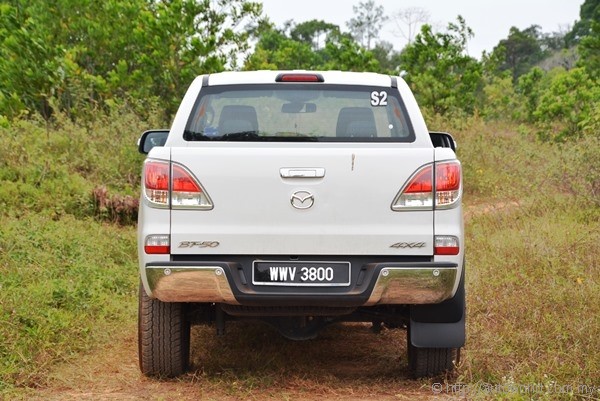 |
| Tail light assembly spills into tailgate area, but without illumination. |
Interior
Contrasting the exterior’s flowing shapes, the cabin carries a comparatively restrained appearance. The centre stack is neatly arranged and controls laid out in a logical fashion. Its common architecture with the Ford Ranger is obvious to the seasoned observer, especially upon operation, but the appearance is once again different enough from its mechanical twin to create an effective visual separation. Locating differences proved easier than spotting similarities.
Solid build quality of the interior is evident, ironically due to the obvious signs of wear exhibited by our 30,000km-seasoned test car. Despite visible surfaces showing considerable amounts of scuff marks of various sorts, the panels remain solidly screwed and vibrations that one would typically expect of a vehicle this badly abused are pleasingly notable for their absence. Closer inspection also show consistent alignment of panel gaps, although material choices, as you would expect, are dominated by hard touch plastics. All these tell us that the BT-50’s cabin will take a lot of hard use in its stride.
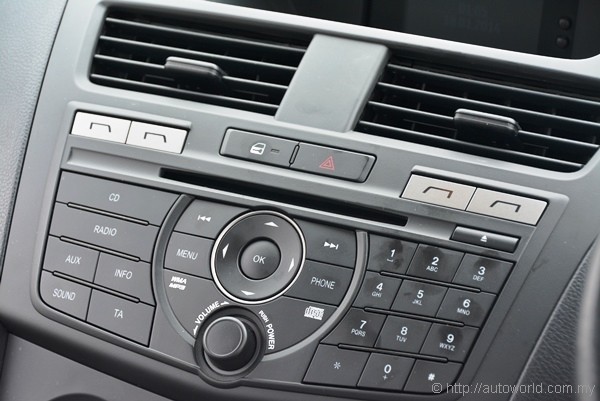 |
| Operating system is shared with the Ranger, but packaged with a different appearance in the BT-50. |
Driving Experience
In meeting growing demand from urban buyers, modern trucks have to face very exacting demands to embody more car-like characteristics whilst at the same retain their toughness and durability to serve more utilitarian applications. The challenge go beyond just integrating advanced features, which the BT-50 already has, but also to exhibit more car-like behaviour on the move especially in terms of comfort and refinement.
The BT-50 successfully achieves the above JD with refinement levels that exceed what we typically expect of pick-up trucks. The seasoned 2.2 turbodiesel mill of our test car remains pleasingly smooth with 30,000km on its clock, and its noise insulation package ranks among the segment’s best, bettering passenger cars even. The engine revs audibly (but not obtrusively) at a highway cruise, but wind and tyre noise are both impressively muted.
Ride comfort is less convincing, although not outright bad; it falls short of the impressive pliancy exhibited by the Mitsubishi Triton, but it stands up well enough against other members of the class. Road undulations are ironed out without fuss, but you’re still best advised to slow down for sharp bumps. At highway speeds, the BT-50 carries itself well, but crosswinds do generate noticeable effects on its directional stability above the national limits. Stay on the legal side of 110kph in crosswind-prone areas.
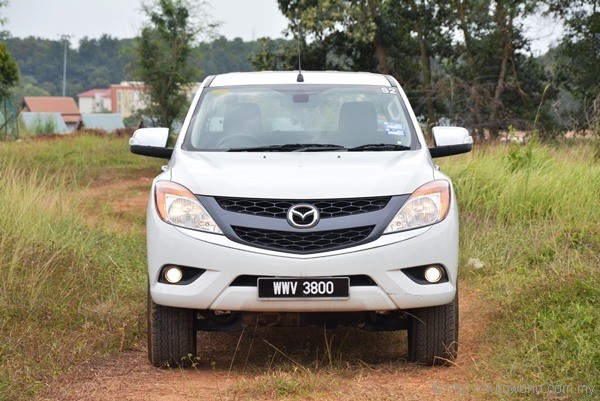 |
| Kodo-ish styling applied on a pick-up truck may not be to everyone’s taste. |
Verdict
Two years from its launch, the Mazda BT-50 remains a class-leading preposition, boasting equipment that will have premium passenger cars, never mind pick-up trucks, green with envy. Ditto its driving experience, which exhibits peerless refinement, even if overall dynamics remain marginally second-best to the Mitsubishi Triton with regards to ride pliancy and high-speed composure.
As pick-up trucks in recent years become increasingly refined vehicles, the BT-50 is a pioneering member of a new generation of pick-up trucks that have made a quantum leap in design, specification, equipment, and refinement. Together with its twin, the Ford Ranger, the BT-50 has set new standards which the next generation of pick-up trucks must measure up against.
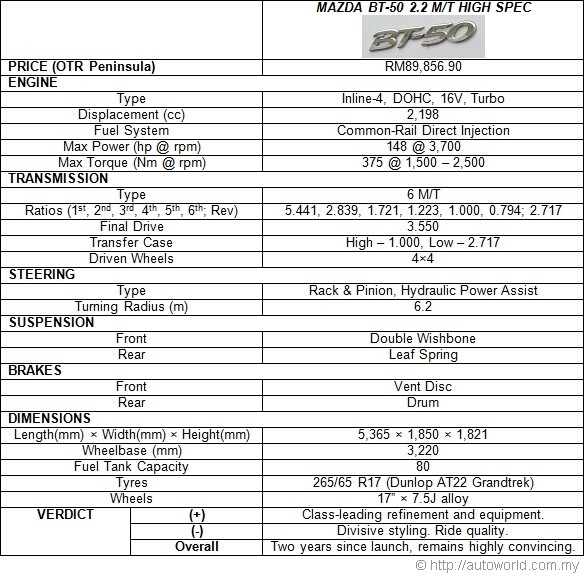 |




